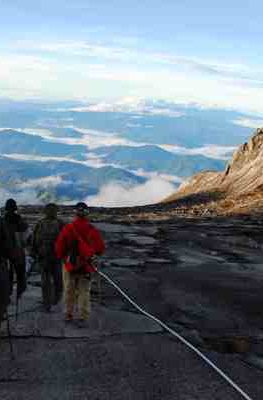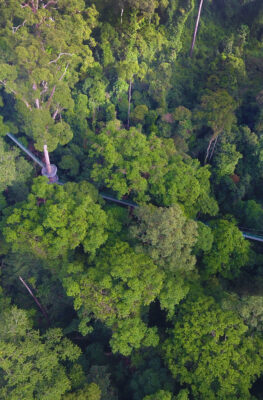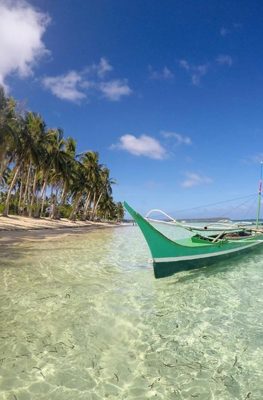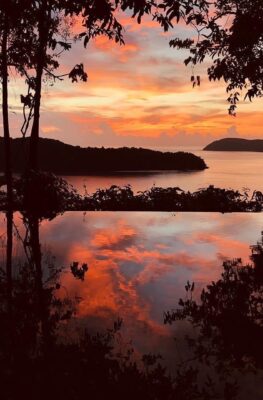Published on January 18, 2023
Diverse, lively, and picturesque, Malaysia is the place where many cultures from across Asia come together. Lush, historic rainforests, delicious food, and pristine beaches are just some of the many marvels of this Southeast Asian nation. From catching sight of the brilliant Bornean Orangutan to exploring the depths of Gunung Mulu National Park, Malaysia is full of extraordinary, once-in-a-lifetime experiences, courtesy of its many natural wonders.
Continue reading to discover five of the most incredible natural wonders in Malaysia.
Gunung Mulu National Park
The Pinnacles at Gunung Mulu National Park | Visit Southeast Asia
A UNESCO World Heritage Site located in Sarawak, the largest Malaysian state, Gunung Mulu National Park is home to some of the country’s most exciting sights. The park is known for its well-documented, well-studied biodiversity, extensive cave system, limestone mountain range, and gorgeous equatorial rainforest. The massive 528-square-kilometer park was established in 1974, and ever since, it has provided nature lovers and adventurers with a wealth of fascination.
Two of Gunung Mulu National Park’s most notable features include Deer Cave—known as Gua Payau or Gua Rusa to locals—and the Mulu Pinnacles. Deer Cave is named after the deer that shelter there. It has a documented length of 2,160 meters, and it is famous for the millions of bats that make their home there as well as a formation near the entrance that resembles the silhouette of American President Abraham Lincoln.
The Pinnacles, meanwhile, are a series of jagged stony cliffs on the park’s Mount Api. The seemingly implausible shapes of the pinnacles make it a unique sight. The park organizes a 3-day, 2-night Pinnacle excursion for visitors to hike (and climb) along the area.
These two singular features aside, the park offers a rich range of flora, fauna, and countless other hikes and paths, making it a great place to camp out for a few days.
Batu Caves
The Batu Caves | Visit Southeast Asia
One of Malaysia’s biggest tourist attractions—and an important pilgrimage site for Tamils—the Batu Caves is an important holy shrine located in Gombak, north of Kuala Lumpur. The spiritual destination is set against a 400-million-year-old series of limestone caves; it became a place of worship in the late 19th century as a temple to Lord Murugan, the Hindu god of war.
The caves are also home to an art gallery and museum showcasing Hindu statues, paintings, and other religious objects. Additionally, the caves are central to the annual Tamil festival of Thaipusam.
Outside of the Batu Caves’ religious significance, the area is the site of many rock climbing routes, and it is also home to the Dark Cave, which has thrillingly unique fauna and thousand-year-old rock formations.
The Batu Caves are worth a visit for many reasons, even if visitors are not Hindu, because of their cultural significance, riveting sights, and proximity to Kuala Lumpur.
Sipadan Island
A diver swims by coral at Sipadan Island | Visit Southeast Asia
In a 1989 film, the famous diver Jacques Cousteau called Sipadan Island “an untouched piece of art.” This remains true—Sipadan, Malaysia’s only oceanic island (shockingly, to those with limited knowledge of Malaysian geography), is still known for being one of the best dive sites in the world.
This pristine marine habitat is home to more than 3000 species of fish and countless more species of coral. Especially unique to the island are the large numbers of green and hawksbill turtles, as well as its giant schools of barracuda. The island is a natural wonder in and of itself—the land was formed by corals growing atop an extinct volcanic cone. It initially made a name for itself as a place for birdwatching.
Permits are required to dive at Sipadan Island, but visitors who aren’t trained in scuba diving can snorkel above some shallow reefs. The nearest airport to the island is Tawau Airport in the Malaysian state of Sabah; visitors must drive to Semporna Island before taking a ferry to Sipadan.
This outstanding natural habitat is a must-visit destination for lovers of marine life and surely deserves its spot as one of the top natural wonders of Malaysia.
Bornean Orangutan
A Bornean Orangutan mother and baby | Visit Southeast Asia
Who says natural wonders are limited to the physical features of the earth? In pursuit of the most incredible forests, lakes, and islands, travelers frequently lose sight of the earth’s other inhabitants: for instance, the endangered Bornean Orangutan. In Malay, the Bornean Orangutan is referred to as ‘person of the forest,’ representing the fact that it shares 97% of its DNA with humans.
This intelligent, solitary species is native to the island of Borneo’s tropical rainforests and are currently most congregated in the Malaysian states of Sabah and Sarawak. They are the third-largest species of great ape, and they can be identified by their shaggy reddish coat and gray skin.
Unfortunately, due to their shrinking numbers, visitors are most likely to find Bornean Orangutans in specific conservation areas and rehabilitation centers. Danum Valley, for one, is a protected rainforest reserve in Sabah where orangutans still roam; another essential site is Sepilok Rehabilitation Centre, which is home to between 60 and 80 orphaned orangutans.
Catch a glimpse of these enthralling primates in the wild or at a rehabilitation center during a visit to the Malaysian rainforest.
Cameron Highlands
Cameron Highlands | Visit Southeast Asia
About a four-hour drive from Kuala Lumpur, the Cameron Highlands is a refreshing respite from the busy capital city. The cool, elevated terrain characteristic of the district makes it a great destination, especially in the spring and the summer. British colonists turned the area into a tourist spot due to its climate; it is now home to old tea estates, orchards, farms, golf courses, and more.
Hiking is a popular activity in the Highlands, as is exploring the tea plantations and local sights. An extensive network of so-called Jungle Trails links the area’s major towns and attractions. Specific attractions in the Cameron Highlands include the Boh Tea Estate, the largest tea producer in Malaysia, the Mossy Forest, a unique jungle with a carpet-like covering of moss underfoot, and the district’s many strawberry farms.
Visitors looking to escape Malaysia’s hotter locales will love the Cameron Highlands’ soothing atmosphere.
Contact Us
Email us at aseantourismonline@gmail.com






